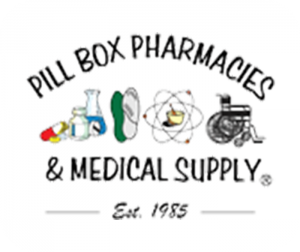Varicose Veins
Venous disorder or venous insufficiency can lead to varicose veins. Medical compression is the standard treatment for varicose veins. A doctor’s visit is recommended, especially if varicose veins are hurting, itching, or burning.

If the veins in your legs that are enlarged, clearly visible under your skin, and twisted or bulging, it’s called varicose veins. Varicose veins are usually painless. Sometimes they can hurt, itch, or burn. If you experience one of these symptoms, it is recommended that you see your doctor.
It is important to diagnose varicose veins as early as possible. This way you can prevent the disease from progressing and avoid more serious complications.
What are varicose veins?
Varicose veins (medical terms: varices, varicosis, or varicosity) are dilated and tortuous veins (3 mm in diameter or larger) that appear as convoluted swellings. Sometimes varicose veins protrude as knot-like bulges on the surface of the skin.
Varicose veins can form in any superficial vein in your body. The veins in the lower extremities (foot, calf, thigh, or entire leg) are most commonly affected. Varicose veins can be painful or, on the contrary, completely painless.
When symptoms are present, they can include ankle and leg swelling, heaviness, fullness, aching, restlessness, fatigue, pain, cramps, and itching.
After sitting or standing for a long time these symptoms can worsen due to increased blood levels and pressure in the veins of your lower body. High temperatures can aggravate these symptoms – varicose veins can trouble you more in the summer.
Why is early diagnosis of varicose veins important?
Early and correct diagnosis of varicose veins is essential to prevent further worsening of venous disease. If varicose veins are left untreated, your quality of life can be negatively affected through discomfort and pain, swelling of your legs (edema), and skin changes.
In addition, varicose veins increase the risk for further severe complications such as thrombophlebitis (inflammatory process causing a blood clot to form), deep vein thrombosis (DVT), variceal bleeding, ulceration, and more.
What causes varicose veins?
In varicose veins, the internal walls of the veins are changed or damaged, causing the veins to dilate. The venous valves do not close properly anymore, the blood flows backwards towards the feet and, as a result, pools in the veins.
This blood pooling causes the veins to stretch or twist, leading to the typical appearance of convoluted swellings and/or knot-like bulges on the surface of the skin.
Varicose veins are not only a sign of aging
Younger individuals with a genetic predisposition can also acquire varicose veins. Risk factors, such as an occupation that involves extensive standing or sitting or being overweight, can further lead to the development of varicose veins. Typically, varicose veins often appear during pregnancy due to the hormonal changes and the higher blood pressure linked to pregnancy: 6 out of 10 women develop their first varicose veins during pregnancy.
What can I do about varicose veins?
If you have observed varicose veins in your legs, you should visit a doctor to check for underlying causes, particularly if the varicose veins cause pain.
By means of ultrasound, the doctor visualizes the blood flow and checks if the superficial veins or the system of deep veins in your legs is affected.
The recommended treatment for varicose veins: medical compression
Medical compression is an easy, drug-free solution that fits most body shapes. A medical compression product is an elastic textile (sock, stocking, or pantyhose) that exerts an active pressure along the leg promoting venous circulation and the return of blood to the heart.
The elastic material of the compression stocking, with stronger compression at the ankle and less going up the leg, helps to compensate for the lack of activation of the venous muscle pump system. It gently squeezes the vein walls together, thereby easing blood flow back towards the heart, reducing venous pressure, and improving overall circulation.
From the very first use, you should feel a benefit: pain and heavy leg sensations decrease. Medical compression also aims to prevent complications.
What can happen if varicose veins are not treated?
If varicose veins are left untreated, this venous disorder may progress into more severe conditions like chronic venous insufficiency that cause:
- Edema
Tissue swelling due to increased fluid accumulation under the skin and tissue. Venous edema usually occurs in the ankle region, but it may extend to the leg and foot. - Eczema
An inflammatory reaction of the skin induced by blood stagnation. It is most often located near varicose veins, but it can be found anywhere on the leg. If left untreated, it can progress to blistering, weeping, or scaling eruption of the skin on the leg. - Pigmentation
A brownish darkening of the skin due to the leakage of blood cells from the vein into the surrounding tissue. It usually occurs in the ankle region, but it may extend to the leg and foot. - Lipodermatosclerosis (LDS)
A localized chronic inflammation of the skin and the tissues of the lower leg. - White atrophy
An often circular, whitish, and alternated skin area surrounded by dilated capillaries. Eczema, pigmentation, LDS, and white atrophy are all signs of severe chronic venous disorders (CVDs). - Leg ulcers (open wounds on legs)
A defect of the skin, most frequently in the ankle region, that fails to heal spontaneously. A venous leg ulcer is one of the most serious results of the progression of chronic venous insufficiency.
Persistent chronic venous disorder and varicose veins can also lead to severe side effects like inflamed veins (phlebitis) or the formation of a blood clot in a vein (thrombosis), that may ultimately lead to a pulmonary embolism.
Summary
Varicose veins (medical terms: varices, varicosis, or varicosity) are dilated and tortuous veins (3 mm in diameter or larger) that appear as convoluted swellings. They can be a sign of a venous disorder.
Basic medical knowledge on venous disorders
- With the term Chronic Venous Disorder (CVD) we describe a long-standing condition involving impaired venous return.
- If vein valves don’t close properly, a reflux results: the blood leaks downwards and stagnates in the vein, thereby leading to venous hypertension. This condition is known as chronic venous insufficiency (CVI) which may cause edema, skin change, and, in some cases, ulcerations.
- If left untreated, chronic venous insufficiency can result in the formation of serious disorders, including phlebitis and pulmonary embolism. To distinguish the different manifestations of CVD, the CEAP classification system is used.
- Acute venous disorders usually occur without pre-existing conditions, but they can also be triggered by chronic venous disorders. In any case, medical treatment is immediately required. Acute venous disorders include superficial thrombophlebitis, deep vein thrombosis (DVT), pulmonary embolism, post-thrombotic syndrome, and variceal bleeding.

